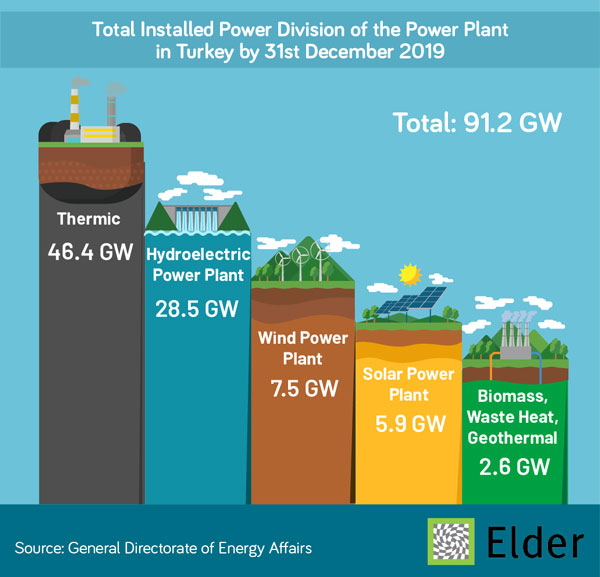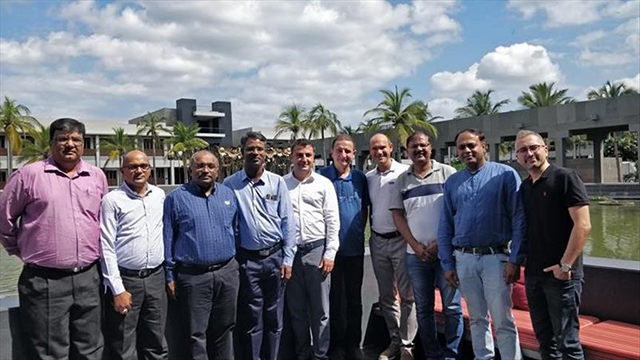
TPI Turkey, the Turkish branch of U.S.-based independent composite wind blade manufacturer, TPI Composites, will oversee the establishment of the company's new blade factory in India, Gokhan Serdar, TPI Composites Europe, the Middle East and Africa (EMEA) and India Region Vice President, told Anadolu Agency on Wednesday.
As TPI Turkey has produced blades since 2012 in the country's western province of Izmir with an annual production capacity of more than 3,000 wind blades, it has gained extensive experience that it will now pass on by assigning more than 70 of its personnel to establish TPI Composites' new blade factory in India, Serdar explained.
TPI Composites' new blade factory will be located on a 150,000 square-meter site in India where test production will start next month. The factory is expected to be up and running by March.
Serdar said that TPI Turkey is actively involved in setting up the new facility, including its physical infrastructure, as well as overseeing human resources and training. The company has recently hosted training in Izmir for a group of new hires from the TPI India facility.
Serdar described the rapport between the Turkish branch and the Indian branch of the company, as “a mother-daughter relationship in which Turkey will take on the role of the ‘mother plant’ while India will take on the role of a ‘daughter plant.'
He hailed the benchmark success of TPI Turkey, which it has gained since its inception in 2012 in Turkey when the manufacture of wind turbines was very limited.
From its operations in Turkey, TPI Turkey has garnered much experience to the extent that now it oversees operations in Europe, the Middle East and Africa and is now responsible for setting up and supporting the plant in India, according to Serdar.
"I do not think that this is common practice in an American company. However in light of this success story, I think Izmir can easily become a production and know-how center [in this region] for wind equipment production," he said.
A team of nearly 1,000 personnel has been recruited so far to work at the new plant, which could expand further depending on the realization of new projects, Serdar explained.
"Seventy employees from TPI Turkey have been assigned to the India facility on a long-term basis. Short-term support is ongoing and will continue in the near future," he said.
TPI first started wind turbine blade production in 1999 and began operations in Izmir in March 2012. In addition to Turkey, TPI factories are located in the U.S., Mexico and China. TPI Turkey currently has almost 3,250 employees.
In an area of 275,000 square meters, the giant composite blades for wind turbines are produced in Turkey for the local market and for international export. In October 2015, the company began to invest in a second production center in the new Izmir Free Zone.
Almost 20% of wind power plants in Turkey with an installed capacity of 1,462 megawatts (MW) are located in Izmir, while Turkey’s Aegean region hosts 38% of Turkey’s wind power plants with an installed capacity of 2,868 MW. Along with TPI composites, Izmir hosts several big international companies such as Enercon, Siemens Gamesa, General Electric LM Wind Power, CS Wind for the production of wind energy equipment.
Source: AA
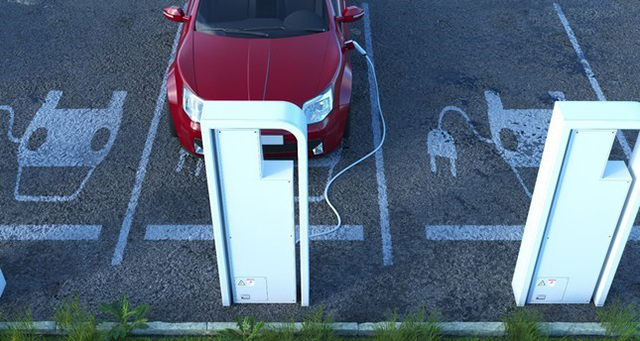
Amid a steady increase in the number of electric and hybrid cars registered across Europe and other parts of the world, Turkey has also been enjoying a noteworthy rise due to increasing environmental awareness and models available in the market.
The number of electric or hybrid cars in the country has tripled in 2019 compared to the previous year and reached 15,053, up from 5,367.
The spike comes amid a decrease in fuel reserves and increasing environmental pollution, which have all led to increasing efforts in the transition to electricity trends in the automotive industry.
Automotive brands are moving away from diesel and gasoline engine vehicle production and are rapidly turning toward hybrid and electric vehicles, which are lauded as an environmentally friendly alternative to gas-powered cars, thanks in part to producing no emissions on the road.
While electric vehicles are developing rapidly in many countries, the growth of the sector has gained momentum also thanks to incentives provided for both manufacturers and drivers.
Turkey is one of the countries that has prioritized this trend and looks to further boost the sales of hybrid and electric automobiles. It is focusing on developing and using low-consumption and environmentally friendly automobile technologies.
It recently witnessed the launch of its first indigenous and all-electric automobile prototype.
The prototype, introduced on December 27, was designed and manufactured in 18 months by Turkey's Automobile Joint Venture Group (TOGG), a conglomerate of industrial giants including the Anadolu Group, BMC, Kok Group, Turkcell and Zorlu Holding as well as an umbrella organization, the Union of Chambers and Commodity Exchanges of Turkey (TOBB).
There are currently two versions of the prototype – a sport utility vehicle (SUV) and a sedan – both fully electric and C-segment models. The consortium's SUV in the C-segment will be the first fully electric SUV in Europe. It will also surpass competitors with the longest wheelbase, largest internal volume and fastest pickup performance.
Mass production of the SUV will begin in 2022, while the production of the sedan model is expected to launch after the SUV goes into production. TOGG is currently working with the Energy and Natural Resources Ministry to determine the optimum location for the installation of fast-charging points in the country.
Of the 12.5 million cars registered as of the end of last year, diesel cars constituted 38.1%, followed by LPG-fueled cars with 37.3%, gasoline-fueled cars with 24.2% and electric or hybrid cars with 0.1%.
Though the number of electric or hybrid cars is relatively low compared to conventional internal combustion engine vehicles, there was still a considerable rise in their registrations.
The number of registered electric and hybrid vehicles was only 47 in 2011. It surged by 385.1% in 2012 to 228 and by 91.2% to 436 in 2013. The same figure stood at 525 in 2014 and 889 in 2015, while it reached the threshold of 1,000 in 2016.
Electric and hybrid cars registered in the traffic hit 1,685 in 2017, before skyrocketing to 5,367 in 2018, and finally 15,053 as of the end of last year. They have increased by approximately 16-fold in the past five years.
Energy and Natural Resources Minister Fatih Donmez recently said over 1 million electric vehicles are anticipated to be on Turkey's roads by 2030.
Also, a previous report by the SHURA Energy Transition Center said Turkey's potential to increase electric vehicle use in the country is high, parallel to the increasing use of electric vehicles in many other countries due to their various benefits, including contribution to a cleaner urban landscape, electricity load management and better efficiency.
The number of passenger electric vehicles in Turkey's total stock is expected to reach 2.5 million by 2030, making up 10% of the total vehicle stock in the same year, according to the report.
In this context, sales of battery and plug-in hybrid electric vehicles are expected to reach 55% of all vehicle sales in Turkey in 2030, the report projected. A total of 1 million charging points are expected to be established by the said period.
Among others, Turkey is among the few countries producing hybrid vehicles. The number of factories producing hybrid vehicles in Turkey will rise to four by the end of 2020.
Following in Toyota, Oyak Renault and Ford Otosan's footsteps, Hyundai Assan is beginning hybrid vehicle production. It will begin hybrid vehicle production with the revamped i20 in the last quarter of 2020. It will also offer a hybrid engine option in the B-SUV model it will produce in 2021.
Source: Daily Sabah
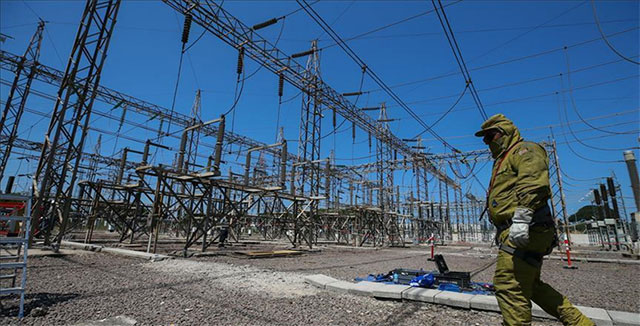
Hydropower produced 91.3% of Norway's electricity in December 2019, equivalent to 11.29 terawatt-hours (TWh), according to Statistics Norway (SSB) on Monday.
In addition to hydropower, the country produced 6.4% of its electricity from wind power and 2.3% from thermal power.
The country's total electricity production was 12.37 TWh in December 2019.
The largest share of consumption composed of the extraction of crude petroleum and natural gas, and power-intensive manufacturing.
The Nordic country's electricity consumption decreased by 1.2% in December 2019, compared to the same period last year.
Source: AA
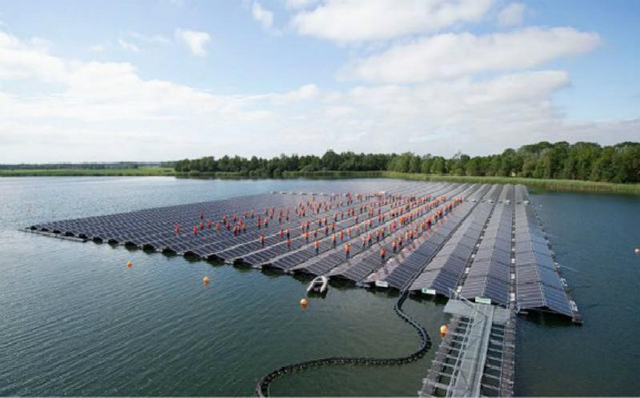
Europe’s largest solar market could make huge strides towards renewable targets and de-escalate land conflicts if it acts to promote floating systems on artificial lakes, a study has said.
Germany holds a 56GWp theoretical potential for floating solar across the manmade water bodies that sit by its opencast mines, according to a review carried out by Fraunhofer ISE researchers on behalf of developer BayWa r.e.
The scientists reached the 56GWp figure after assessing 500 opencast ponds at Germany’s lignite coal mines, a collective 47,251 hectares of water bodies. Once areas earmarked for conservation and tourism were set aside, the nation-wide potential still reached 2.74GWp, the review found.
Researchers identified the biggest floating PV potential in Central Germany and Lusatia, an area bordering Poland and slated to become one of Europe’s key artificial lake hotspots. These opencast mining regions are, the study said, well suited to floating because they are already linked to the grid.
Fraunhofer ISE used the findings as basis to call for Germany to sponsor floating PV, offering state support that helps close the 10-15% cost gap between the segment and cheaper ground-mount plants. PV on water should be “privileged” given its land-neutral status, the institute argued.
“It would make sense to have innovation tenders especially for floating PV and other area-neutral PV power plants that still need a market boost,” said Dr. Harry Wirth, Fraunhofer ISE’s head of Photovoltaic Modules and Power Plants.
Dedicated tenders aside, Germany should reclassify opencast lakes as conversion areas for renewable purposes, Fraunhofer ISE said. Floating PV should become a default part of mine redevelopment plans, with mechanisms added to ensure environmental impacts are understood and citizens can get involved, the institute said.
BayWa r.e. – the firm commissioning the analysis – echoed the calls for dedicated support to floating PV, with head of Power Plant Engineering Edgar Gimbel urging Germany to create the “right framework” and simplify the approval process. The developer has become a rising force in European floating PV, having completed a 25MW duo last year and planning to follow with 100MW in 2020.
Source: World Energy

The US Departments of Energy (DOE), Homeland Security (DHS), and Defense (DoD) have jointly signed a memorandum of understanding to partner on the government’s new Energy Sector Pathfinder initiative.
The goals of this initiative are to advance information sharing, improve training and education to understand systemic risks, and develop joint operational preparedness and response activities to cybersecurity threats.
The Energy Sector Pathfinder initiative builds on previous Pathfinder initiatives and is exploratory, scoped to address the technologies, challenges, and threats facing a specific critical infrastructure sector adapted to its regulatory environment, maturity, and existing relationship with the US government.
The Energy Sector Pathfinder will explore challenges facing America’s energy critical infrastructure and strengthen interagency collaboration on preventing and responding to the constantly evolving cyber threats.
“Through this agreement, we will strengthen the partnership between DOE, DHS, and DoD to enable intergovernmental cooperation and bolster our ability to proactively address cyber threats to critical energy infrastructure, and to respond effectively should those threats materialize,” said DOE Assistant Secretary of Cybersecurity, Energy Security and Emergency Response, Karen Evans. “The Department of Energy is committed to working with our partner agencies to secure US critical energy infrastructure.”
Source: Smart Energy

The UK government is to bring forward the ban on sales of combustion engine vehicles from 2040 to 2035.
Prime Minister Boris Johnson announced the new target at the launch of the UN-led COP26 climate change summit this morning.
The original ban on sales of petrol and diesel-powered vehicles was announced in July 2017 but was immediately criticised as not going far enough. The UK has since committed to emitting net-zero greenhouse gas emissions by 2050. To help achieve this, the ban was moved so fewer new combustion vehicles would be on the road at that time.
In 2018 this goal was expanded into making all cars “effectively zero emission”. The move was called “vague and unambitious” by parliament’s business select committee, but trade body The Society for Motor Manufacturers and Traders (SMMT) said moving the ban to MPs’ preferred date would be “nigh on impossible.”
On Friday, president of COP26 Claire O’Neill was fired by Johnson. She told the BBC this morning that Johnson’s government showed a “huge lack of leadership and engagement”.
She said: “My advice to anybody to whom Boris is making promises […] is to get it in writing, get a lawyer to look at it and make sure the money’s in the bank.”
SMMT chief executive Mike Hawes said: “It’s extremely concerning that government has seemingly moved the goalposts for consumers and industry on such a critical issue.
“With current demand for this still expensive technology still just a fraction of sales, it’s clear that accelerating an already very challenging ambition will take more than industry investment.
“ So we therefore need to hear how government plans to fulfil its ambitions in a sustainable way, one that safeguards industry and jobs, allows people from all income groups and regions to adapt and benefit, and, crucially, does not undermine sales of today’s low emission technologies, including popular hybrids, all of which are essential to deliver air quality and climate change goals now.”
Friends of the Earth head of policy Mike Childs said: “The government is right to accelerate the phase-out of petrol and diesel cars to curb air pollution and address the climate emergency, but the ban should start in 2030 – not 2035.
“If the UK government wants to show real leadership ahead of this year’s climate summit it must also urgently reverse its plans for more climate-wrecking roads and runways – and pull the plug on its support for new gas, coal and oil developments.”
Source: Power Technology
Space-Based Solar Power: Market Opportunities
The space-based solar power (SSP) is expected to play a crucial role in the future of power generation due to its unlimited potential. Although it has few drawbacks, such as the transportation of solar panels to space, with the development of the reusable rockets it is expected that in the future space-based solar power will become a reality and help meet Earth-based energy needs. This report will analyze the emerging market opportunities for space based solar energy systems, also looking at several advantages SSP systems hold over the other energy sources.
Please click here to read the full report.
Solar Istanbul 2020
March 11 - 13 / Istanbul
3rd International Forum Energy for Smart Mobility
March 31 - April 01 / Marseille
InnoGrid2020+ Conference
May 05 - 06 / Brussels
23rd World Hydrogen Energy Conference
July 05 - 09 / Istanbul
4th International Conference on Energy Research and Technology
August 19 - 21 / Praque

